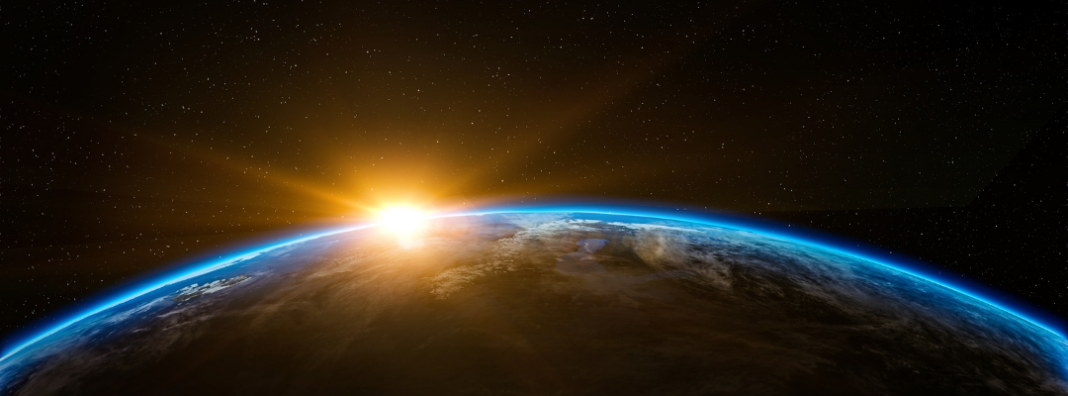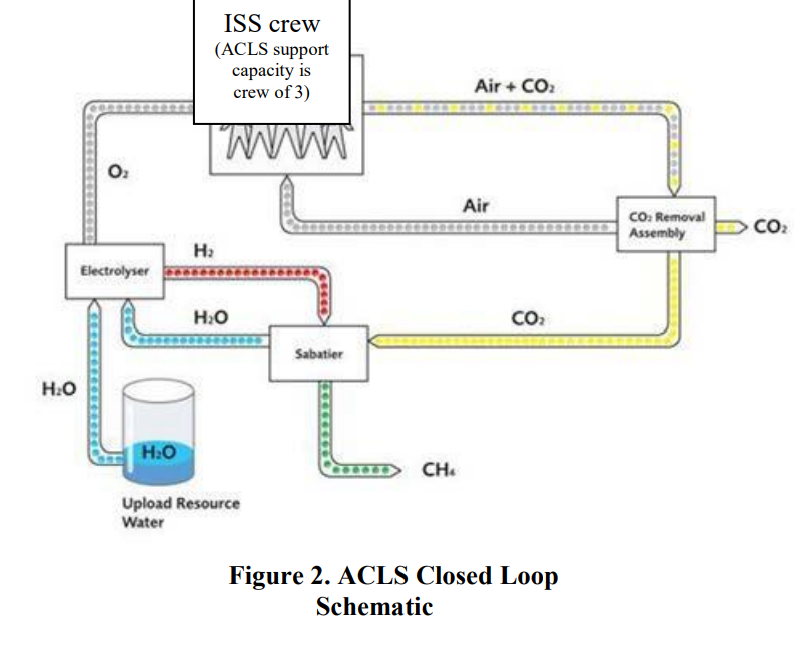
If we asked you to guess the most inhospitable place humans have ever lived, where would you pick? Perhaps Siberia, where this past January a town of 1,000 residents saw a record low of﹣80°F? Or would you choose Death Valley, California, where temperatures regularly top 120°F during the summer, and where the world’s hottest temperature of 134°F was recorded? The Atacama Desert in Chile would be another good guess. It is the driest place on Earth, receiving less than one millimeter of rainfall each year. All of these guesses, however, would be wrong. The most inhospitable place humans have ever lived isn’t even on Earth—because it’s outer space.
External temperatures at the international space station can range from highs of 250°F to lows of negative 250°F. Water, air, and even gravity are completely absent. The challenges of traveling to and surviving in these extreme conditions have been solved by decades of science, research, and brilliant innovation. And although life on Earth presents far fewer challenges than living among the stars, many of these innovations have subsequently been used to greatly improve life and technology right here on our home planet.
With all of the conversations and efforts around colonizing planets like Mars, many questions have been raised as to whether living in space is something we should continue to pursue or if resources would be better invested to solve problems here on Earth. It is certainly a valid criticism. Investors have poured more than $272 billion into the space industry over the past decade. But it would be wrong to assume that there is zero overlap between innovations in space exploration and innovations here on Earth. The two can be, and often are, synonymous.
Depending on how you look at it, the venture to explore and colonize space is not so different from the mission to reduce the impacts of climate change and improve life on Earth. In space, we face resource limitations, requiring us to maximize efficiency and minimize waste. Here on Earth, efficient resource use and waste reduction are key aspects of sustainability and green initiatives. As we learn to use resources in the most efficient way possible in space, we can use what we learn to more efficiently manage resources on Earth and ultimately increase the abundance of our homeworld.
Water Shortage/Food Production
It is hard to believe that in just 60 years—shorter than a single lifespan—we have gone from launching a man into space to planning to colonize other planets. The ability to do so will require massive improvements in efficient and sustainable uses of oxygen, food, water, and energy. But it is a goal NASA and other organizations are well on their way to accomplishing. According to Luke Roberson, senior principal investigator for flight research at NASA’s Kennedy Space Center, NASA “is pursuing sustainable architecture on the lunar surface as early as 2028—the sort requiring technology to provide long-term, regenerating caches of food, air and water.”
Scarcity is not a new challenge to us Earthdwellers. For millennia, societies have lived and died by their access to water and fertile plains. Droughts and plagues have crippled empires. But now, tech designed to endure the rigors of space exploration are solving scarcity challenges here on Earth.
The United Arab Emirates (UAE) is currently importing 90 percent of its food because it doesn’t have enough water to produce its own. The country recently partnered with a space tech company, Nanoracks, in a plan to open an experimental solar-powered greenhouse originally designed to go to the Moon. This greenhouse will allow the UAE to produce a larger portion of its own food.
These space greenhouses can provide an environment for food and plant growth even in the harshest climates—can you imagine a worse place for a vegetable garden than the surface of the Moon? This technology will allow desert countries, where most things can’t grow because of the squelching heat, to be a major source of food production by taking advantage of the abundance of direct sunlight. This could boost agriculture and reduce food scarcity for many countries like the UAE grappling with similar critical conditions.
Closed Loop System
In Dune, a 1965 science fiction novel by Author Frank Herbert, people have colonized a world similar to the Atacama Desert, where water supplies are unbelievably scarce. Characters survive by using a closed-loop hydration system when venturing into the desert. Known as stillsuits, the system recycles their sweat into drinkable water. This allows them to stay hydrated while out working and traveling.
In 2018, a similar system—the Advanced Closed Loop System (ACLS)—was launched to the International Space Station. The ACLS is a way to remove carbon dioxide and regenerate oxygen. According to its functional description, “about 40 percent of the water needed for oxygen production can be produced on-board from the carbon dioxide which is exhaled by the astronauts. The remaining water needs to be uploaded from the ground.” This process has saved 450 kg of water upload per year. Originally designed to preserve water in the solar-powered greenhouses and generate oxygen in the ISS, this system could also be applied here on Earth to sustain oxygen levels, reprocess carbon dioxide, and preserve water.
The European Space Agency’s Micro-Ecological Life Support System Alternative (MELiSSA) is currently researching how to recycle waste products into important resources for astronauts. The project focuses on converting human waste and CO2 into sustainable resources like food, water, and oxygen. A self-sufficient environment could reduce the mass of material that astronauts take into space with them and allow us to reuse resources.
On Earth, technology from the MELiSSA project is providing clean drinking water for universities in Africa and researchers in Antarctica. Bacteria tested as a food source in the MELiSSA project will soon be marketed as a medicine that can reduce bad cholesterol by half. And Semilla Sanitation, a commercial spin-off of MELiSSA, helps emergency response efforts by offering portable sanitation hubs that provide toilets, showers, and tubs using wastewater converted to drinking water.
The future goal is for the closed loop systems to be applied to other resources as well. As this happens, we will no longer be limited by droughts or hindered by lack of food—in space or on Earth.
Technology from Space to Earth
For further evidence of the benefits that space research can provide for life here on Earth, take a look at the impact it has already had. A variety of tech that was originally created for use in space is now playing very important roles in our lives on Earth. The most obvious of those being satellites.
NASA-operated satellites provide us with photos to help us understand the state of our planet. We have pictures of coral reef degradation, problematic plankton blooms, and thinning ice for polar bears. The growing hole in the ozone layer over the South Pole was discovered by a NASA satellite. This discovery led to an agreement to address a global environmental problem on an international level.
We also have satellites to provide us with national security and communication. Military satellites help us gather intelligence information which provides us with safety and security. Communication satellites allow people to stay connected regardless of physical location.
But it doesn’t stop at satellites. Many technologies currently improving our quality of life have come directly from the space program. For example, the Goddard Space Flight Center was creating a system to regulate astronauts’ vitals because the extreme environment in space creates serious health risks for astronauts. This technology was later adapted for regulating blood sugar levels and used to create the insulin pump.
Other technologies used in both everyday and life-changing products include: artificial limbs, scratch-resistant lenses, firefighting equipment, DustBusters, LASIK surgeries, shock absorbers for buildings, water filtration systems, better tires, wireless headsets, adjustable smoke detectors, invisible braces, freeze dried foods, camera phones, CAT scans, baby formula, improved highway and airport pavement, air purifiers, memory foam, workout machines, home insulation, infrared ear thermometers, ice resistant airplanes, portable computers, athletic shoes, LEDs, and many more.
The pattern continues. Space exploration and development are important contributors to technological progression.
Space Technologies of the Future
We are currently seeing innovation, development, and deployment of space tech unlike anything since the height of the Space Race in the 60’s and 70’s.
In November 2021, Sierra Space announced a $1.4 billion Series A investment. This will go towards the advancement of their Dream Chaser Spaceplane (a commercial orbital space plane), and the development of their LIFE Habitat (a commercial habitation for business and science). Both of these ultimately add to what Sierra Space calls the Orbital Reef—a low Earth orbit station for research, commerce, and tourism—that Blue Origin is helping to develop. The components of the Orbital Reef will allow us to continue to push the bounds of space as the new frontier for research and exploration.
Space-age technology is integral to the world economy here on Earth and should remain a research priority. Future advancements in space-tech may lead to 3D printed food for commercial use, robotics and AI advancements, improved communication abilities, commercial space travel, increased understanding of the universe, and satellites that harvest solar power. There really is no telling how radically future space-tech could improve life here on Earth.
Consider all the technological advances that would have been missed and will be missed if we lose sight of the importance of funding space research. Space challenges us to find ways for humanity to flourish in the most inhospitable conditions. This requires a sustainable way of life that only thinking outside the box—and out of this world—can provide.
Pushing the bounds of science by funding space innovation and exploration will continue to support human flourishing here on Earth. In many ways our desire to leave this planet and spread out amongst the stars is making our time here much richer.



